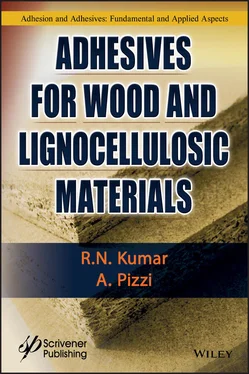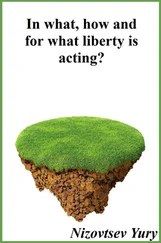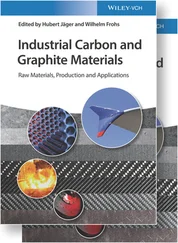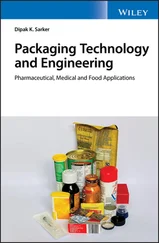22. Elstner, E.F. and Heupel, A., Formation of hydrogen peroxide by isolated cell walls from horseradish ( Armoracia lapathifolia Gilib.). Planta, 130, 175–180, 1976.
23. Halliwell, B., Lignin synthesis: The generation of hydrogen peroxide and superoxide by horseradish peroxidase and its stimulation by manganese (II) and phenols. Planta, 140, 81–88, 1978.
24. Glasser, W.G., Lignin, in: Pulp and Paper Chemistry and Chemical Technology, 3rd edn., J.P. Casey (Ed.), pp. 39–111, Wiley Interscience, New York, 1980.
25. Wang, D., Wang’s Wood Chemistry Class, Basic Lignin Chemistry, David Wang’s Wood Chemistry Class, National Chung Hsing University, Forestry Dept. http://web.nchu.edu.tw/pweb/users/taiwanfir/lesson/10476.pdf.
26. Adler, E., Lignin chemistry: Past, present and future. Wood Sci. Technol., 11, 169–218, 1977.
27. Marra, A., Technology of Wood Bonding Principles in Practice, Van Nostrand, Reinhold, New York, 1992.
28. Brady, E. and Kamke, F.A., Effects of hotpressing parameters on resin penetration. For. Prod. J., 38, 63–68, 1988.
29. Collett, B.M., A review of surface and interfacial adhesion in wood science and related fields. Wood Sci. Technol., 6, 1–42, 1972.
30. Jakal, L., Effect of the penetration of adhesive on the strength of adhesion. Faipar, 34, 2, 59–60, 1984.
31. Sernek, M., Resnik, J., Kamke, F.A., Penetration of liquid urea–formaldehyde adhesive into beech wood. Wood Fibre Sci., 31, 1, 41–48, 1999.
32. Laborie, M.-P., Investigation of the wood/phenol-formaldehyde adhesive interphase morphology. PhD thesis, Virginia Polytechnic Institute and State University, Blacksburg, Virginia, 2002.
33. White, M.S., Influence of resin penetration on the fracture toughness of bonded wood, PhD thesis, Virginia Polytechnic Institute and State University, Blacksburg, Virginia, 1975.
34. Nearn, W.T., Application of the ultrastructure concept in industrial wood products research. Wood Sci., 6, 285–293, 1974.
35. Nearn, W.T., Wood–Adhesive Interface Relations. Conference on the Wood–Paint Interface, Berkeley, October, 1964.
36. Gardner, D.J., Chapter 19, in: Adhesion Mechanisms of Durable Wood Adhesive Bonds, D.D. Stokke and L.H. Groom (Eds.), Wiley, New York BLIO009-Stokke, September 13, 2005, 2006.
37. Sellers, T., Jr., Adhesives in the wood industry, in: Handbook of Adhesive Technology, 1st edn, A. Pizzi and K.L. Mittal (Eds.), pp. 599–614, Marcel Dekker, New York, 1994.
38. Johnson, S.E. and Kamke, F.A., Quantitative analysis of gross adhesive penetration in wood using fluorescence microscopy. J. Adhes., 40, 47–61, 1992.
39. Gray, V.R., The wetting, adhesion and penetration of surface coatings on wood. JOCCA, 44, 756–786, 1961.
40. Hare, D.A. and Kutscha, N., Microscopy of eastern spruce plywood gluelines. Wood Sci., 6, 294–304, 1974.
41. Kedziers, A., Effect of adhesive penetration into wood on the strength of glued joints. Przemsyl-Drzewny, 37, 3, 18–20, 1986.
42. Smith, L.A., Resin penetration of wood cell walls—Implications for adhesion of polymers to wood. PhD thesis, pp. 172–176, Syracuse University, University Microfilms, Ann Arbor, Michigan, 1971.
43. Tarkow, H. and Southerland, C.E., Interaction of wood with polymeric materials: I. Nature of absorbing surface. For. Prod. J., 14, 184–186, 1964.
44. Kamke, F.A. and Lee, J.N., Adhesive penetration in wood—A review. Wood Fiber Sci., 39, 205–220, 2007.
45. Levenspiel, O., Engineering Flow and Heat Exchange, Plenum Press, New York, 1984.
46. Tarkow, H., Feist, W.C., Southerland, C.F., Penetration versus molecular size—Interaction of wood with polymeric materials. For. Prod. J., 16, 10, 61–65, 1966.
47. Marcinko, J.J., Devathala, S., Rinaldi, P.L., Bao, S., Investigating the molecular and bulk dynamics of PMDI/wood and UF/wood composites. For. Prod. J., 48, 6, 81–84, 1998.
48. Frazier, C.E., Isocyanate wood binders, in: Handbook of Adhesive Technology, 2nd edn, A. Pizzi and K.L. Mittal (Eds.), Marcel Dekker, New York, 2003.
49. Frihart, C.R., Adhesive interaction with wood, in: Fundamentals of Composite Processing, pp. 29–53, Madison, WI, Nov. 5–6, 2003. Gen. Tech. Rep. FPL-GTR-149. USDA, For. Serv., For. Prod. Lab, 2004.
50. Kučerová, I., Methods to measure the penetration of consolidant solutions into dry wood. J. Cult. Heritage, 135, 5191–5195, 2012.
51. Siau, J.F., Wood: Influence of Moisture on Physical Properties, Virginia Tech, Blacksburg, VA, Pub. No. 7282 Forest Products Society, Madison, WI, 1995.
52. White, M.S., Influence of resin penetration on the fracture toughness of wood adhesive bonds. Wood Sci., 10, 1, 6–14, 1977.
53. Hse, C.-H., Properties of phenolic adhesives as related to bond quality in southern pine plywood. For. Prod. J., 21, 1, 44–52, 1971.
54. Johnson, S.E. and Kamke, F.A., Characteristics of phenol-formaldehyde adhesive bonds in steam injection pressed flakeboard. Wood Fiber Sci., 26, 259–269, 1994.
55. Frazier, C.E., Schmidt R, R., Ni, J., Towards a Molecular Understanding of Wood–Isocyanate Adhesive Bondline. Proceedings 3rd Pacific Rim Bio-Based Composite Symposium, Kyoto, Japan, Dec. 2–5, pp. 383–391, 1996.
56. Stephen, R.S. and Kutscha, N.P., Effect of resin molecular weight on bonding flakeboard. Wood Fiber Sci., 19, 353–361, 1987.
57. Gollob, L., The correlation between preparation and properties in phenolic resins, in: Wood Adhesives Chemistry and Technology, vol. 2, A. Pizzi (Ed.), pp. 121–153, Marcel Dekker, New York, 1989.
58. Gollob, L., Krahmer, R.L., Wellons, J.D., Christiansen, A.W., Relationship between chemical characteristics of phenol–formaldehyde resins and adhesive performance. For. Prod. J., 35, 3, 42–48, 1985.
59. Zheng, J., Studies of PF resole/isocyanate hybrid adhesives. PhD thesis, 198 pp., Virginia Polytechnic Institute and State University, Blacksburg, VA, 2002.
Chapter 2 Fundamentals of Adhesion
2.1 Introduction
Adhesion is a multidisciplinary science involving various subjects such as rheology, materials science, organic chemistry, polymer science, and mechanics. Study of fundamentals of adhesion is essential as it leads to better understanding of the factors controlling the performance of the bonded assemblies [1].
Wood is a complex substrate, and it is hard to understand why some adhesives work better than other adhesives, especially under stringent durability tests.
The recent trend in the wood industry is to use smaller-diameter logs and employ other lignocellulosic raw materials to produce more versatile and environmentally acceptable green engineered wood products. This in turn increases the complexity in the choice of adhesives. In order to provide a scientific basis to make the correct choice of adhesives and their formulations, a study of the fundamentals of adhesion is essential.
A clear understanding of wood adhesion mechanisms will enable production of better adhesive and formulation systems suitable for a wider array of wood composite materials. The study of the fundamentals of wood adhesion is essentially distinctive and unique and involves multidisciplinary sciences with respect to both the adherend, the adhesives, and their interactions. The uniqueness of wood as an adherend by virtue of possessing a hierarchical structure has already been dealt with in detail in Chapter 1. In this respect, wood differs significantly from other substrates such as metals, plastics, elastomers, etc. Surface science, rheology, materials science, surface chemistry and surface morphology, organic chemistry, polymer science and polymer characterization, and solid mechanics and interaction between polymers and wood—all contribute to the development and understanding of the adhesion phenomenon.
Читать дальше












